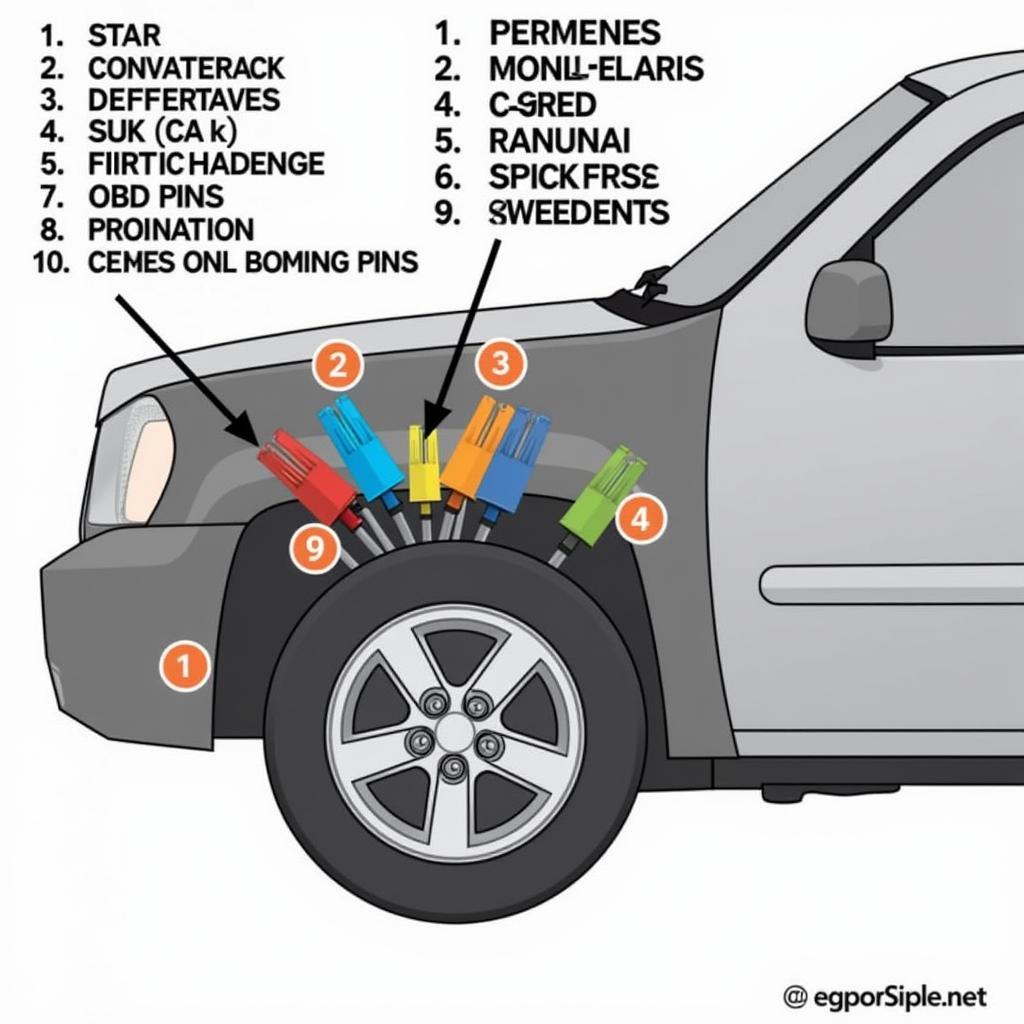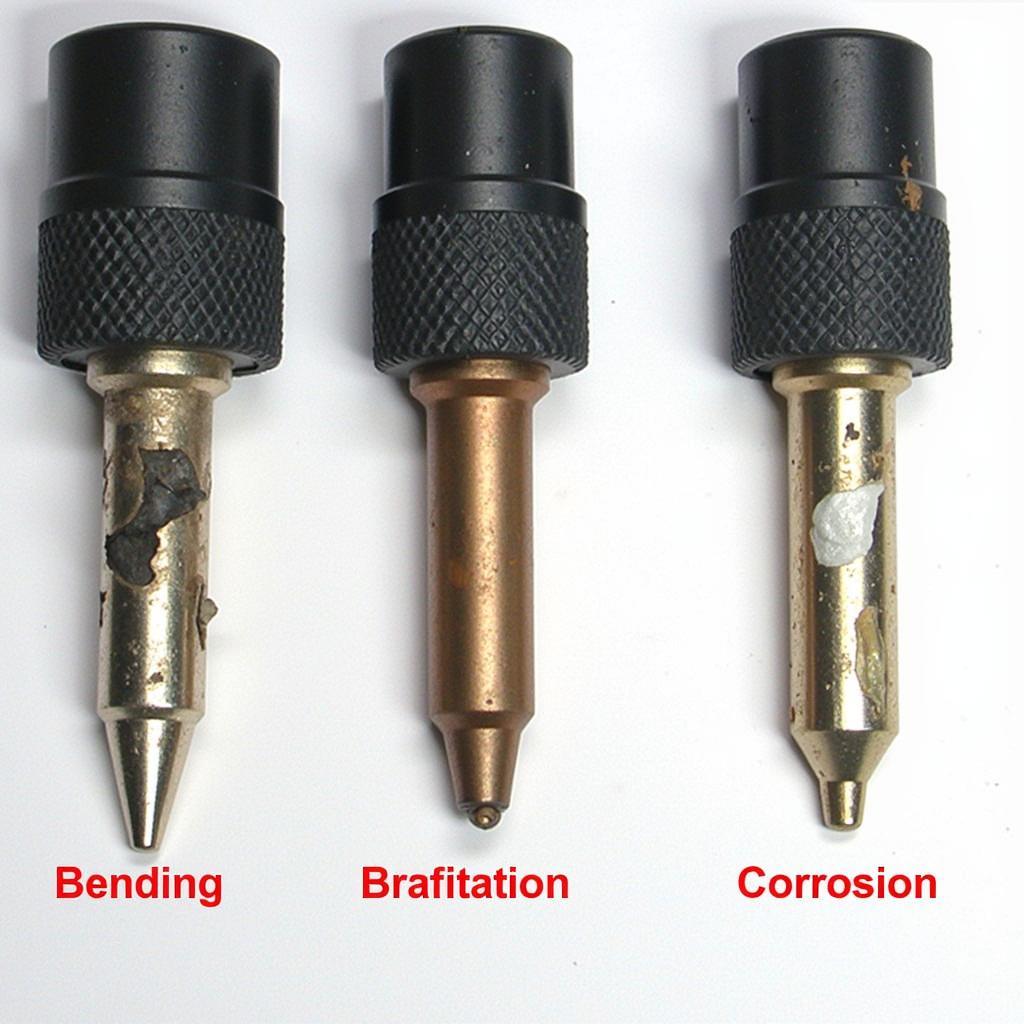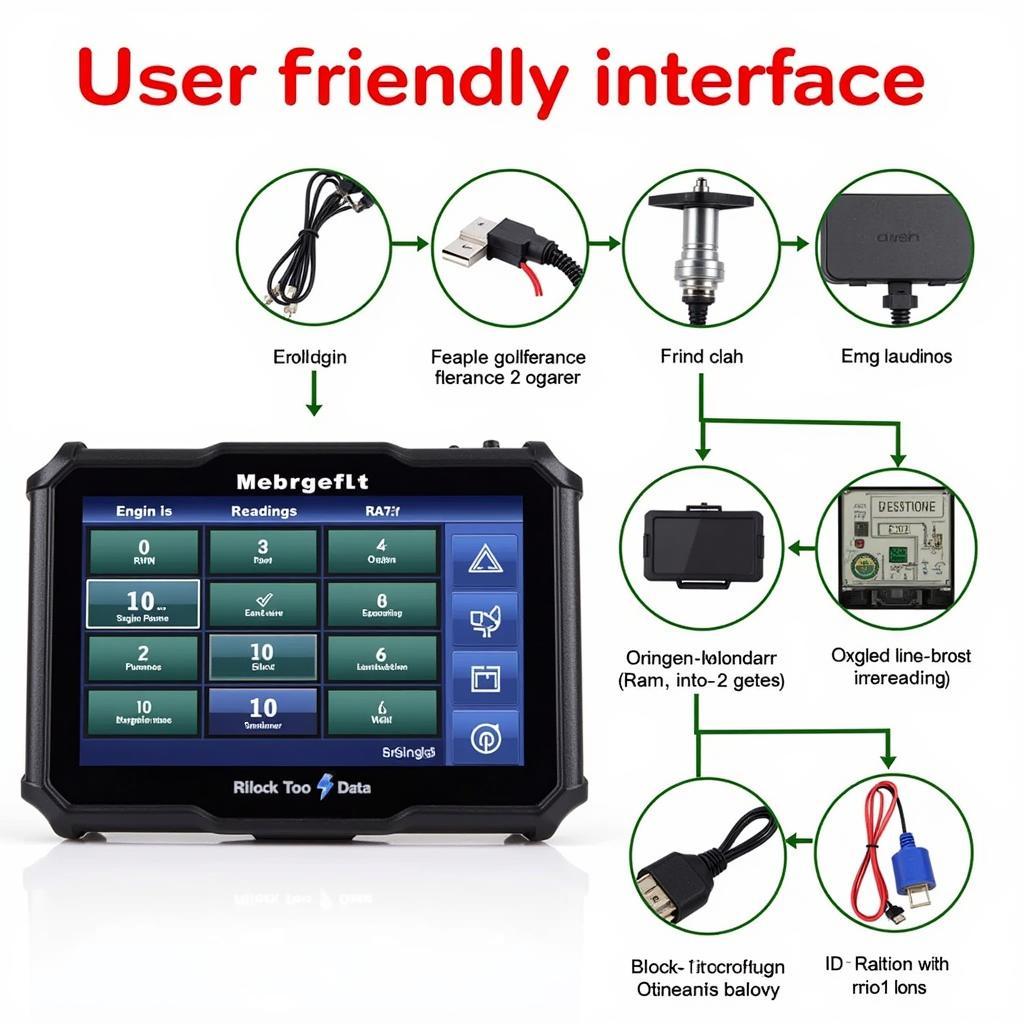The Obd Scan Tool Pin, a critical component of your vehicle’s diagnostic system, acts as the gateway to understanding your car’s health. This article will delve into the importance of the OBD scan tool pin, common issues you might encounter, and how to troubleshoot them effectively.
Similar to scan health plan helpful tools, understanding the OBD system is crucial for maintaining your vehicle’s performance. A malfunctioning OBD scan tool pin can prevent you from diagnosing problems, leading to potential further damage and costly repairs. This seemingly small component plays a large role in vehicle maintenance and repair.
What is an OBD Scan Tool Pin and Why Does It Matter?
The OBD scan tool pin, located on the OBD-II connector, is the physical point of contact between your vehicle’s onboard computer and the OBD scan tool. Each pin within the connector has a specific function, transmitting data related to various systems in your car, such as the engine, transmission, and emissions system. This data allows you to identify and address issues before they escalate.
What happens if an OBD scan tool pin is damaged? A damaged or bent pin can disrupt communication between the scan tool and the car’s computer, making it impossible to retrieve diagnostic trouble codes (DTCs). Without access to these codes, troubleshooting becomes significantly more challenging.
 OBD Scan Tool Pin Location and Identification
OBD Scan Tool Pin Location and Identification
Common OBD Scan Tool Pin Problems
A range of issues can affect your OBD scan tool pin. These include bent or broken pins due to rough handling, corrosion from exposure to moisture, and loose connections caused by vibrations. Occasionally, the issue may not be with the pin itself but with the scan tool’s connector.
How can you identify a faulty OBD scan tool pin? Visual inspection is the first step. Check for any signs of physical damage, such as bent, broken, or corroded pins. If the pins appear intact, the problem might lie elsewhere.
 Common OBD Scan Tool Pin Damage Types
Common OBD Scan Tool Pin Damage Types
Troubleshooting OBD Scan Tool Pin Issues
Troubleshooting OBD scan tool pin problems requires a systematic approach. First, visually inspect the OBD-II connector and the scan tool’s connector for any obvious damage. If you find a bent pin, carefully try to straighten it using a small, non-conductive tool. For corroded pins, a specialized contact cleaner can be used to restore conductivity. Always ensure the ignition is off before attempting any repairs.
What if the problem persists after cleaning and straightening the pins? This could indicate a more serious issue, such as a wiring problem within the vehicle’s electrical system. In this situation, consulting a qualified automotive technician is recommended.
This process is similar to troubleshooting issues highlighted in jaguar scan tool prices which often involves examining the OBD system. Remember, accurate diagnosis relies on a properly functioning OBD system.
Essential Tools for OBD Scan Tool Pin Repair
Having the right tools is crucial for effectively addressing OBD scan tool pin problems. A set of precision tools, including small pliers, tweezers, and a magnifying glass, will allow for precise handling and inspection of the pins. Contact cleaner specifically designed for electrical connections is also essential for removing corrosion.
Why are specialized tools important? Using the wrong tools can worsen the problem, causing further damage to the delicate pins. Investing in a good set of tools can save you time and money in the long run.
“Regular inspection of the OBD-II port is a simple yet crucial preventative measure,” advises John Smith, Senior Automotive Electrical Engineer at Apex Automotive Solutions. “This can help identify potential issues early on, preventing costly repairs down the line.”
Preventing Future OBD Scan Tool Pin Problems
Prevention is always better than cure. Protecting your OBD-II port from moisture and dust can significantly reduce the risk of corrosion and damage to the pins. A simple cap or cover can provide effective protection. Also, avoid forceful insertion or removal of the scan tool connector.
Are there any other preventative measures? Yes, regularly inspecting the OBD-II port for signs of damage and cleaning it with contact cleaner can help maintain its functionality. This is particularly important in harsher climates where exposure to extreme temperatures and moisture is common. For those looking for the best car diagnostic scan tools european, ensuring your OBD port is functioning correctly is paramount for accurate diagnostics.
“A well-maintained OBD system is essential for any vehicle owner,” adds Maria Garcia, Lead Diagnostic Technician at AutoTech Solutions. “It empowers you to take control of your car’s health and make informed decisions about maintenance and repairs.” Just like using an seo scan tool to analyze website health, an OBD scan tool helps you understand your vehicle’s condition.
Conclusion
The OBD scan tool pin may be a small component, but it plays a vital role in keeping your car running smoothly. By understanding its importance, common problems, and troubleshooting techniques, you can ensure a healthy and reliable diagnostic system. For more information on basic car scanners, consider checking out resources like otc car scanner. Contact ScanToolUS at +1 (641) 206-8880 or visit our office at 1615 S Laramie Ave, Cicero, IL 60804, USA for further assistance.

